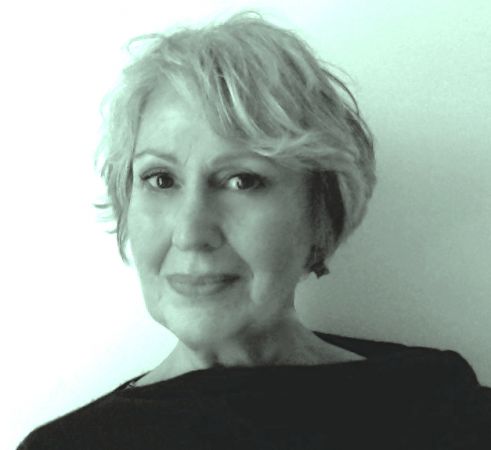
Meet the Therapist: Rhona Wooldridge
Rhona Wooldridge is a therapist in NW6, London and online
What attracted you to become a therapist?
I reached a stage in my life where becoming a therapist was the culmination of my ‘red thread’ woven over many decades into a tapestry of journeys working with people in many different roles. Eventually it was listening to prisoners’ life stories in Pentonville prison that brought me to a point where my listening needed to be taken to a deeper level of engagement.
Where did you train?
I trained at the Minster Centre, London
Can you tell us about the type of therapy you practise?
Integrative therapy marries well with my personality and core belief that there is not one truth. The Integrative framework is informed by a humanistic approach which involves the collaboration with the client; it is a cross of different schools of psychotherapy and therefore combines different therapeutic tools and approaches to fit the needs of the individual client. It is a relational approach that relies on establishing a trusting therapeutic relationship.
How does therapy help with symptoms of trauma and attachment difficulties?
Clients may not be aware how past unresolved trauma and childhood attachment issues can impact on their lives in the present. Many times the symptoms can, for example, be presented as intrusive thoughts and memories, anxiety, depression, panic attacks, abusive relationships, anger, low self-esteem, mood swings, guilt, shame, self-blame, feeling sad, difficulty maintaining relationships, and a low level of trust in others.
I can bring into the work, where relevant, CBT techniques, sensorimotor body and mind interventions, neurobiological techniques, and psychodynamic attachment -based interventions.
What sort of people do you usually see?
General age range is 20 upwards. Individuals with anxiety, unresolved historical trauma, relational difficulties, working with ADHD/ADD, attachment difficulties stemming from childhood.
What do you like about being a therapist?
I consider it a privilege to sit in a room with a client who is willing to share their story – a window into their inner world. As an integrative therapist I can creatively find ways to adapt and apply what I have learned from different theoretical models.
To be a therapist you are constantly learning and evolving. I value the importance of curiosity and intuition which allows me to remain open to whatever ambiguity or uncertainty is encountered with the client. As therapists we listen silently for meaning to gain a deeper understanding of the other’s ways of being in the world (the anagram for listen is silent).
The existential psychiatrist Irvin Yalom has a wonderful metaphor for the intention of therapy for clients: “opening doors to rooms of their own house”.
What is less pleasant?
Sitting for long periods. The isolation working in private practice. The administrative responsibilities of running a business.
Do you ever suggest books or apps to clients?
Headspace, Calm – audio apps for basic guided mindful meditations
The Drummer and the Great Mountain – for ADHD/ADD clients:
What Color is Your Parachute Workbook – to help with career change transitions:
Stop Thinking and Start Living by Richard Carlson – help address negative thought patterns:
The Body Keeps the Score: Brain, Mind, and Body in the Healing of Trauma by Bessel van der Kolk – healing and understanding of trauma:
What you do for your own mental health?
Learn something new, walking, meditation, socialising, laughter, exploring, looking at art.
You are a therapist in North West London. What can you share with us about seeing clients in that area?
I am based in North West London; I see clients face-to-face and online. The demographic is diverse in age and ethnicity.
What’s your consultation room like?
I have created a calming space with plants, paintings, soft lighting and quiet colours. I use an essential oils diffuser to humidify the air which also gently permeates the air with a gentle fragrance. The room is also my library where I spend time reading and writing.
What do you wish people knew about therapy?
It might be helpful to view therapy as having regular, confidential conversations in a safe space. It is different than the conversations you have with friends or relations, as the therapist’s role is to listen deeply and explore with you what you are experiencing in the session.
Some people think they have to come with an agenda – to be responsible for knowing what they want to talk about. This can be helpful, however, it's not uncommon for a client to come to therapy with one intention and discover some other issue comes to light. It is in those moments, with the help of the therapist, that clients can engage in different and more meaningful perspectives.
Therapy can be healing but it is not a ‘cure’, nor is it quick ‘fix it’ process. However, therapy can contribute to better and deeper self-awareness, insight, working through unresolved problems, and discovering your inner resources and resilience, to make the changes that are important for you. I believe there are two important contributing indicators for effective therapy – the individual’s motivation and commitment, and a successful collaborative therapeutic relationship. It takes courage to embark on a therapeutic journey, to build trust so you feel safe to say and be who you are without judgement.
What did you learn about yourself in therapy?
I consider personal therapy to be an ongoing process which involves arduous self-scrutiny and inner work. Paying attention to how my attachment style affects the therapeutic relationships I have with clients. What if feels like to be present in the here and now. Be safe enough to experience my vulnerabilities and what it really means to be ‘authentic’.














